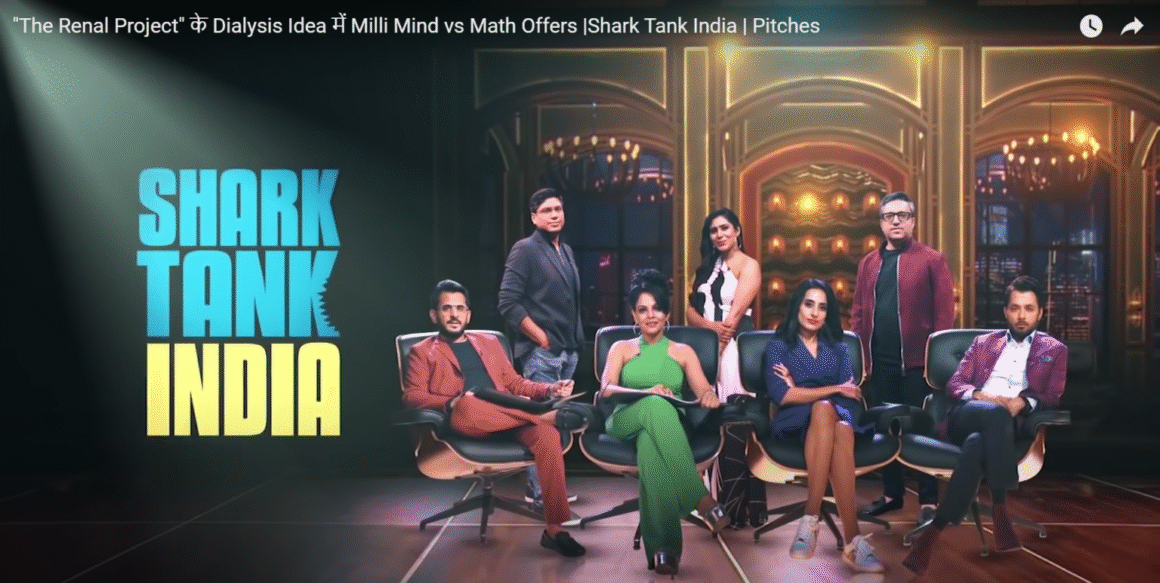The story of The Renal Project starts with Shashank Moddhia, a biomedical engineer with a vision to solve India’s dialysis crisis.

Why Dialysis?
- India has over 7.8 million people living with chronic kidney disease (CKD).
- Only 10% of patients requiring dialysis have consistent access to it.
- Many rural towns lack dialysis centers, forcing patients to travel long distances multiple times a week.
- Set up micro-centers for dialysis in small towns and hospitals.
- Use cost-efficient technology to lower treatment costs.
- Maintain international hygiene standards without the big-city price tag.
Shark Tank India: A Pitch That Moved the Sharks
Key Highlights from the Pitch:
- At the time of the show, they had 20+ centers across India.
The Ask
Shashank asked for ₹1 crore in exchange for 6% equity.
The Deal
After negotiations, one of the Sharks came forward with an offer The exposure from the show became just as valuable as the funding.
The Dialysis Landscape in India: Why This Matters
To truly understand The Renal Project’s impact, we need to look at the dialysis industry in India.
The Hard Truths
- High Costs: Even government hospitals can’t always provide affordable, timely treatment.
- Shortage of Centers: The bulk of dialysis centers are in metro cities.
- Travel Burden: Patients often travel 50–100 km for treatment—thrice a week.
Government Support
This is where The Renal Project steps in—bridging the gap between policy intent and on-ground execution.
The Renal Project’s Unique Model
Shashank’s model blends affordability, accessibility, and scalability.
Key Features:
- Micro-Centers in Smaller Towns – No need for large hospital complexes.
- Tech-Enabled Operations – Real-time monitoring, digital records, and reduced overhead.
- Partnership with Local Healthcare Providers – Leverage existing infrastructure.
- Lower Cost per Session – Thanks to lean operations and equipment optimization.
Impact:
- Centers in Tier 2 & Tier 3 cities have reduced patient travel time by 80%.
Life After Shark Tank: Growth and Expansion
Post-Shark Tank, The Renal Project saw:
- Increased brand trust—patients started switching from expensive city hospitals.
- Investor interest—beyond the Shark’s funding, more impact investors approached them.
- Rapid expansion—centers increased from 20 to over 35 within a year.
Challenges
Even with the progress, there are hurdles:
- Recruiting skilled technicians in rural areas.
- Educating patients about early kidney disease detection.
- Scaling without compromising quality.
Shashank remains vocal about the need for public-private partnerships to make dialysis universally available.
Lessons for Entrepreneurs from The Renal Project
- Solve a Real Problem – Businesses that tackle urgent social issues get lasting traction.
- Start Lean, Scale Smart – Their micro-center model proves you don’t need big money to start big impact.
How Dialysis Care Can Evolve in India
Based on the The Renal Project’s example, India’s dialysis future could include:
- Decentralized care centers in every district.
- Government subsidies for low-income patients.
- AI-based patient monitoring for better outcomes.
- Public awareness campaigns for early CKD screening.
Final Thought
As they expand, they’re setting an example for impact-driven entrepreneurship—showing that doing good and doing well can go hand in hand.
For more Blogs: beyondthepunchlines.com

 Add to favorites
Add to favorites








